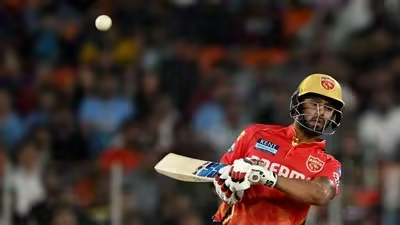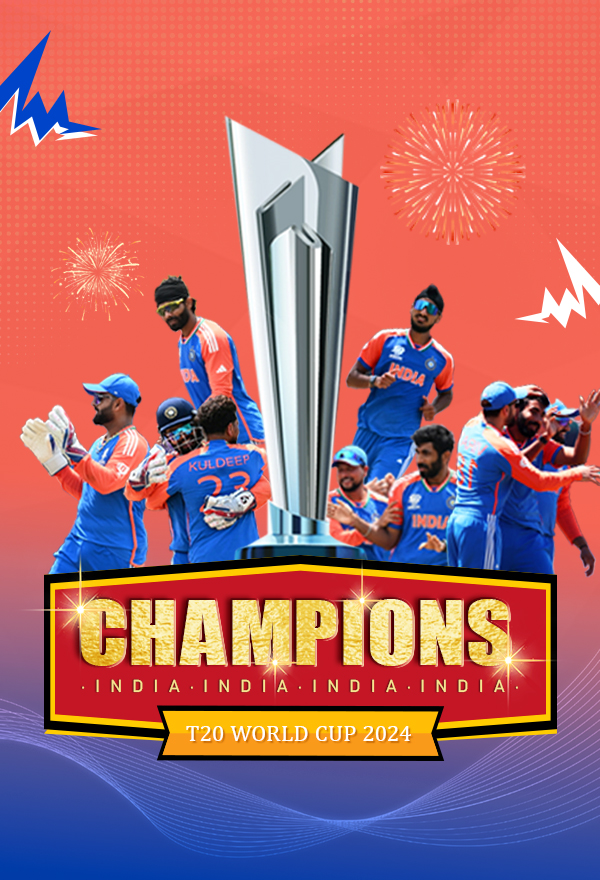
IPL’s two-bouncer rule: Making an impact, in a new way
Ranajit Dhar
getcricketnews|21-04-2024
Swing out or get out has been the usual recourse for batters in this IPL, encouraged by thicker bats and disproportionate boundary lengths. Throwing a spanner into this aggressive ploy this season is the short ball, or more precisely the second bouncer. It’s still a wide spectrum considering how deft changes in lengths and speeds add layers to this delivery. And not everyone has succeeded in exploiting the second bouncer rule too.
Mitchell Starc, IPL’s most expensive recruit, has admittedly not tried it too much. Neither has Anrich Nortje or Kagiso Rabada. More at ease with it seem to be Indian pacers who have a better understanding of the conditions and ground dimensions and are more comfortable with bowling the slower variety of the bouncer. “I think we have seen it being used differently by different attacks, different teams in different conditions,” said Starc after Kolkata Knight Riders’ win against Lucknow Supergiant last Sunday. “Conditions like pace and bounce of the wicket sometimes dictate it, as well as the situation of the game.”
With the introduction of the Impact Player rule last year, teams were allowed to add more depth to the already deep batting orders. To counter it with a second bouncer per over, giving them the licence to hit the hard lengths, was a necessary deterrent.
Earlier, batsmen were able to predict where the bowler would bowl if he had used his one bouncer. It would be easier for the batsmen,” Rajasthan Royals pacer Sandeep Sharma had said towards the beginning of the tournament. “But with two bouncers, the batsmen are also in two minds that there's still one bouncer left for the bowler to use.”
With T20 lighting a fire under attacking batting, the focus of the second bouncer understandably is to first stem the runs and only then go for a wicket. To that effect, LSG have been the most economical, conceding less than a run (0.89) till Friday’s match, even though Chennai Super Kings have used it most often — averaging 2.3 second bouncers per match, taking their overall count to 12.1 bouncers per game. That only Mumbai Indians have been able to rival this count with 12 bouncers per match — including 1.9 second bouncers — tells you how circumspect teams have been in general when it comes to trying the second bouncer, but it still doesn’t quite cover the anticipation factor or the harder lengths that batters have often struggled to connect to.
Nowhere else was that discomfort more apparent than when Virat Kohli was repeatedly failing to get hold of Andre Russell’s slower bouncers outside the off-stump at Bengaluru last month when RCB were looking to accelerate. The length challenged Kohli but more testing was the line and the lack of pace on it, making it impossible to get under the ball and ramp it. The timing of it was important too. A harder, shinier ball isn’t a great ingredient for the second bouncer during the Powerplay overs when field restrictions are in place. The older, scuffed up ball however gives the second bouncer a much-needed slower twist, explaining why the balls per second bouncer drops from 164.8 in the Powerplay to 87.1 in the middle overs and 45 at the death.
Latest Newsmore

Before the IND vs NZ series, the captain suffered a terrible elbow injury, away from cricket for the next 4 months.
07-Oct-2024 • Rahul Tiwari

Gill betrayed India during Bangladesh T20 series, suddenly decided to leave the country and play for Australia
07-Oct-2024 • Rahul Tiwari

6,6,6,6,6,6,6,6… David Miller’s storm, created a new history by scoring a century in just 35 balls in T20 International.
07-Oct-2024 • Rahul Tiwari

15-member Team India announced for Test series against South Africa! Shami-Hardik-Ishaan return
07-Oct-2024 • Rahul Tiwari

Rohit Sharma gave the biggest blow in history to Nita Ambani, announced to leave Mumbai Indians and join this team.
07-Oct-2024 • Rahul Tiwari






